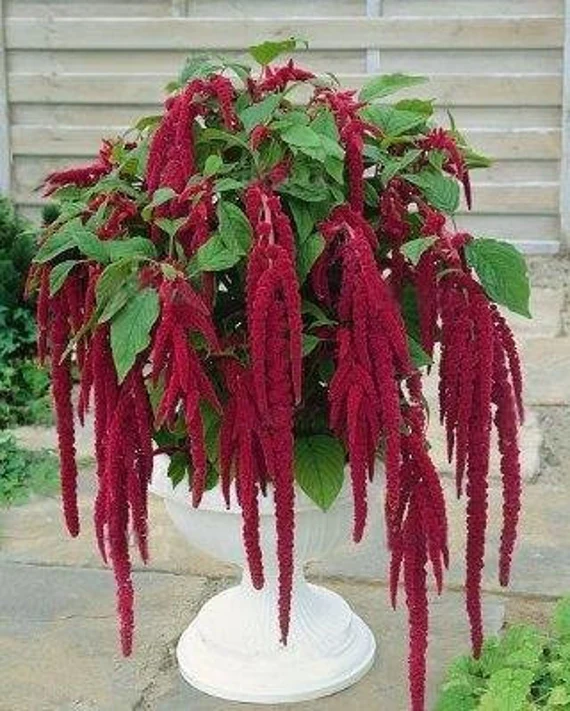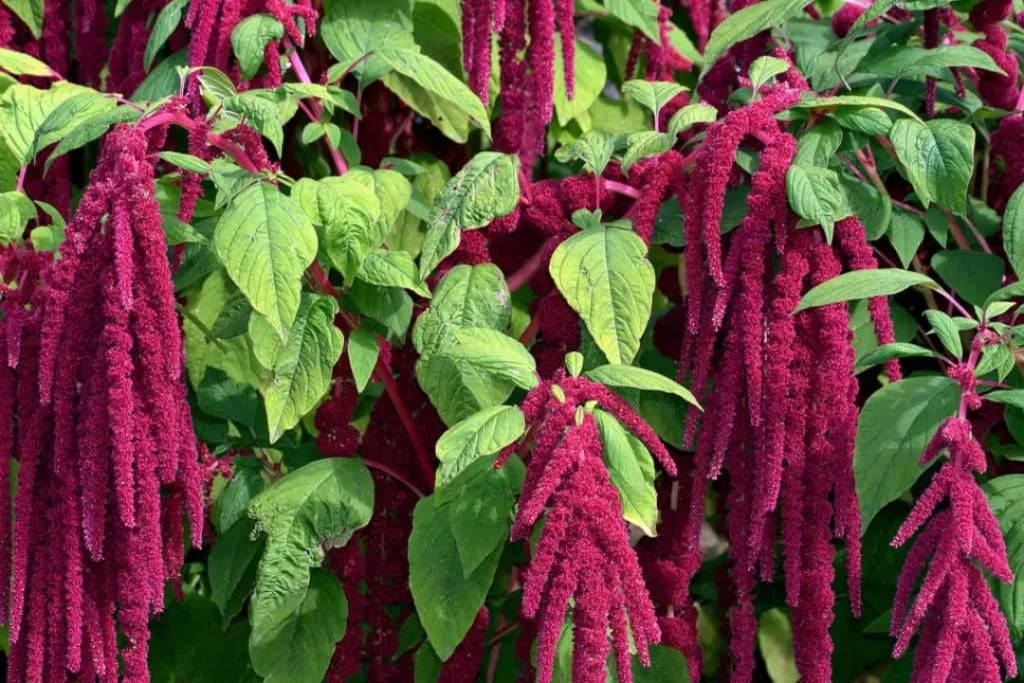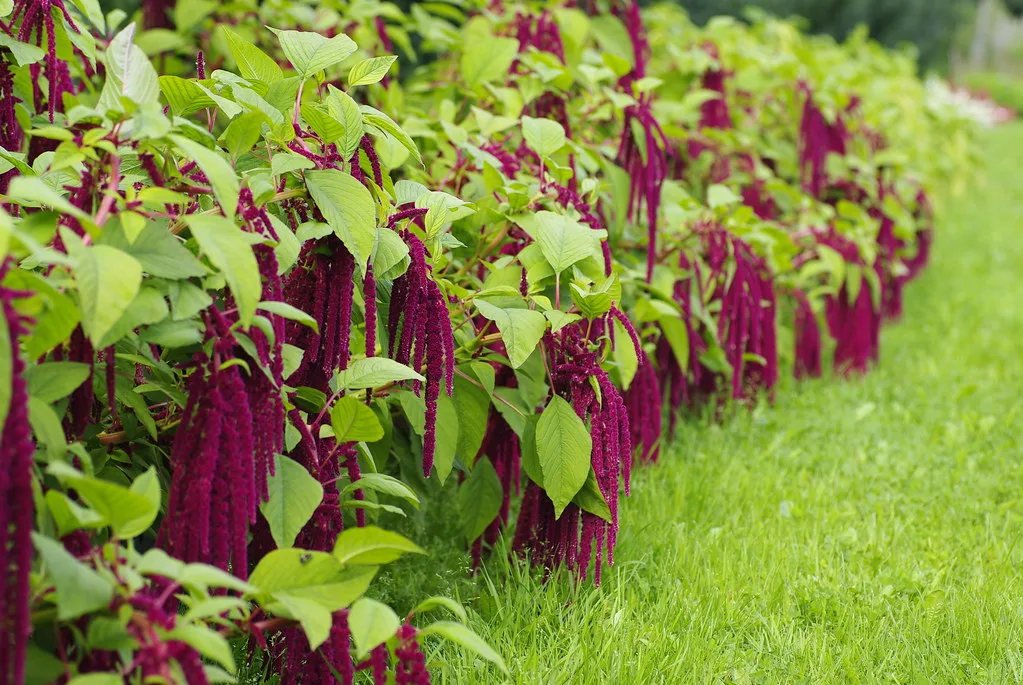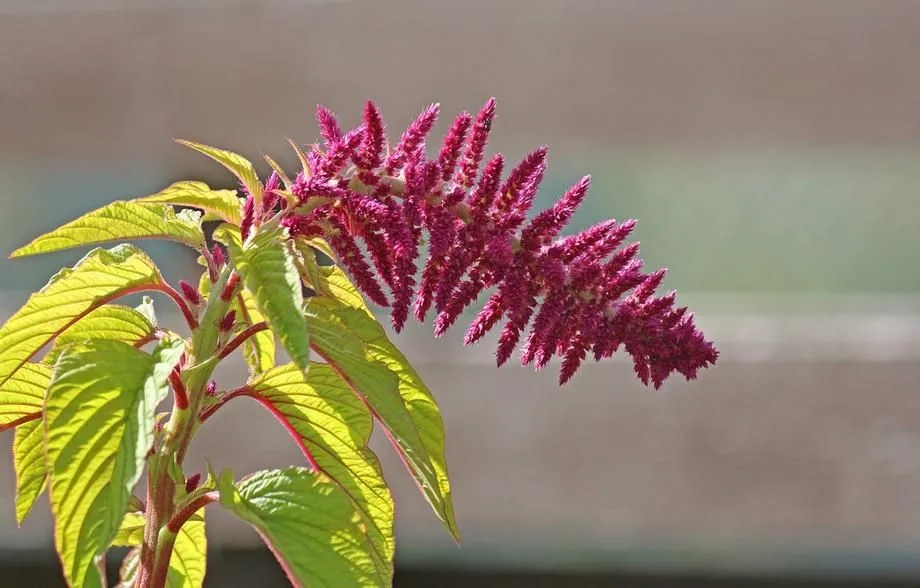INDEX
Introduction
Love-lies-bleeding, scientifically known as Amaranthus caudatus, is a fascinating plant that enchants with its pendulous and colorful inflorescences, which resemble ornamental Love-lies-bleedings. Originally from the tropical regions of South America, this annual plant belongs to the Amaranthaceae family.
With its unique and exuberant appearance, the Love-lies-bleeding is a striking addition to ornamental gardens. Its inflorescences in vibrant shades of red, pink and purple create a visual spectacle, attracting gardening admirers in search of unique varieties. In addition to its aesthetic beauty, the Love-lies-bleeding also has cultural significance in some regions, symbolizing prosperity and abundance. Find out more about this intriguing plant and how to grow it to transform your garden into a true spectacle of color.
| Item | Love-lies-bleeding Information |
|---|---|
| Common Name | Love-lies-bleeding |
| Botanical Name | Amaranthus caudatus |
| Family | Amaranthaceae |
| Plant Type | Annual |
| Adult Size | About 60-90 cm tall |
| Sun exposure | Full sun |
| Soil type | Well-drained, fertile |
| soil pH | Neutral to slightly acidic (6.0-7.0) |
| Flowering Season | Summer to fall |
| Flower color | Red, pink, purple |
| Native Area | Tropical regions of South America |
| Toxicity | Non-toxic |

How to Care for Love-lies-bleeding
Light
To ensure that the Love-lies-bleeding blooms exuberantly, it is essential to provide it with the right amount of light. Make sure you place the plant in an area that receives full sun, favoring its healthy development and stimulating the production of its colorful inflorescences.
Soil
The soil plays a crucial role in the successful cultivation of Love-lies-bleeding. Prefer a well-drained and fertile soil to allow good circulation of water and nutrients. This will contribute to healthy roots and strengthen the plant’s resistance.
Watering
When watering the Love-lies-bleeding, aim for balance. Avoid overwatering, which can lead to root decay. Allow the soil to dry out between waterings, maintaining adequate humidity to ensure an environment conducive to flowering.
Temperature and humidity
This plant thrives in hot and humid climates. Make sure you provide a stable, moderate temperature. If possible, create an environment that simulates tropical conditions, promoting robust growth.
Fertilizing
Fertilize the Love-lies-bleeding during the growing season with a balanced fertilizer. Avoid over-fertilizing, as this can result in lush growth, but at the expense of flower quality. Opt for a balanced approach to ensure vibrant, long-lasting flowering.

How to make Love-lies-bleeding Seedlings
Choosing the period
Love-lies-bleeding can be propagated by seeds. Choose late spring or early summer to start this process. This period provides ideal conditions for the initial development of the seedlings.
Steps for making seedlings
- Harvesting seeds:
- Wait for the right time to harvest the seeds, when the flowers begin to dry.
- Remove the seeds from the bunches, making sure they are ripe.
- Soil preparation:
- Choose a light, well-drained substrate.
- Plant the seeds in small containers or trays.
- Planting the seeds:
- Plant the seeds at a shallow depth, covering them with a thin layer of soil.
- Keep the soil moist, but avoid overwatering.
- Germination:
- Wait for germination, which usually takes 7 to 14 days.
- Once the seedlings are large enough, they can be transplanted to permanent locations.
How to plant Love-lies-bleeding
Choosing a location
- Adequate light:
- Select a site with full sun exposure to promote healthy growth and vibrant blooms.
- Soil Preparation:
- Make sure the soil is well-drained and enriched with organic matter.
- Spacing:
- Plant the seedlings at a suitable distance apart, allowing the plant to develop fully.
- Initial watering:
- After planting, carry out an initial watering to establish the seedlings in their new environment.
By following these guidelines, you’ll be well on your way to enjoying a healthy and lively Love-lies-bleeding in your garden.

Pests and diseases
Common pests:
- Mites:
- Symptoms: White spots on the leaves and fine webs.
- Control: Increase humidity, use predatory mites or apply neem oil.
- Mealybugs:
- Symptoms: Sticky spots on the leaves and the presence of shield-shaped insects.
- Control: Remove by hand, use insecticidal soap or neem oil.
- Aphids:
- Symptoms: Deformed leaf growth and the presence of small insects.
- Control: Rinse with water, apply neem oil or use natural predators.
Common diseases:
- Powdery mildew:
- Symptoms: White coating on the leaves.
- Control: Remove affected parts, maintain good air circulation and apply fungicides.
- Root rot:
- Symptoms: Yellowing and wilting of the leaves.
- Control: Avoid waterlogged soil, plant in well-drained soil and reduce watering.

Common Problems and Their Solutions
Yellowing of the leaves:
- Cause: Excess water or lack of nutrients.
- Solution: Adjust watering, check soil drainage and apply balanced fertilizer.
Lack of flowers:
- Cause: Lack of direct sunlight.
- Solution: Move the plant to a sunnier spot.
Shriveled leaves:
- Cause: Water stress.
- Solution: Water the plant properly and monitor the soil moisture.
Small or faded flowers:
- Cause: Lack of nutrients.
- Solution: Fertilize the plant with a balanced fertilizer.
By understanding and proactively dealing with these problems, you will ensure healthy and vibrant growth for your Love-lies-bleeding.
Curiosities and Myths About Love-lies-bleeding
Fascinating Curiosities
- Andean origin:
- Love-lies-bleeding has its roots in the Andean regions of South America, where it was cultivated by ancient civilizations for its ornamental and nutritional properties.
- Edible flowers:
- Surprisingly, the flowers of the Love-lies-bleeding are edible. In some cultures, they are used in salads, adding color and an exotic touch to dishes.
- Cultural significance:
- In some traditions, the Love-lies-bleeding is a symbol of prosperity and abundance, and is used in rituals and celebrations.
Myths Debunked
- It attracts roosters:
- Despite its name, Love-lies-bleeding does not attract or is intended for roosters. The name is a reference to the appearance of the inflorescences, which resemble the tails of ornamental roosters.
- Grows quickly and uncontrollably:
- A common myth is that Love-lies-bleeding grows uncontrollably. In reality, its growth is manageable, especially with proper pruning and maintenance.
- Requires acidic soil:
- Contrary to the myth that it prefers acidic soil, the Love-lies-bleeding thrives in neutral to slightly acidic soil. Acidity is not an essential requirement for its cultivation.
Discover Beauty Beyond the Ordinary
By exploring the curiosities and debunking the myths surrounding the Love-lies-bleeding, we reveal a truly intriguing plant, rich in cultural history and ornamental beauty. By growing this plant, you not only add an exotic touch to your garden, but also delve into traditions and meanings that span centuries.

Conclusion
In summary, the Love-lies-bleeding (Amaranthus caudatus) stands out as a truly captivating plant, not only for its ornamental beauty, but also for its rich cultural history. Originally from the Andean regions of South America, this annual plant has won hearts with its pendulous inflorescences that resemble ornamental Love-lies-bleedings. Its flowers not only add a visual spectacle to the garden, but also have culinary value in some cultures, being edible and used in decorative dishes. In addition, the Love-lies-bleedingcarries symbolic meanings, representing prosperity and abundance in various traditions.
When embarking on the journey of caring for the Love-lies-bleeding, it is crucial to understand its specific needs, from adequate light to pest and disease control. Seed propagation and caring for the plant from seedling to adult are essential aspects of successful cultivation.
By debunking common myths, we learn that its growth is manageable and that its peculiar name has nothing to do with attracting roosters. However, the plant carries with it a unique aura, representing a true botanical treasure. As we explore the curiosities and challenges, we discover that growing Love-lies-bleeding goes beyond a gardening activity; it is an enriching experience that connects us to nature and cultural traditions, making our garden a true haven of beauty and meaning.
Frequently Asked Questions
What does Amaranthus mean?
The word “Amaranthus” has Greek origins and means “flower that does not fade” or “immortal”. This name reflects the resistance and longevity of Amaranthus flowers. In addition to its etymological meaning, Amaranthus is symbolic in many cultures, representing immortality, prosperity and resistance. This plant has a strong presence in both ornamental gardening and food, carrying with it cultural and botanical meanings.







